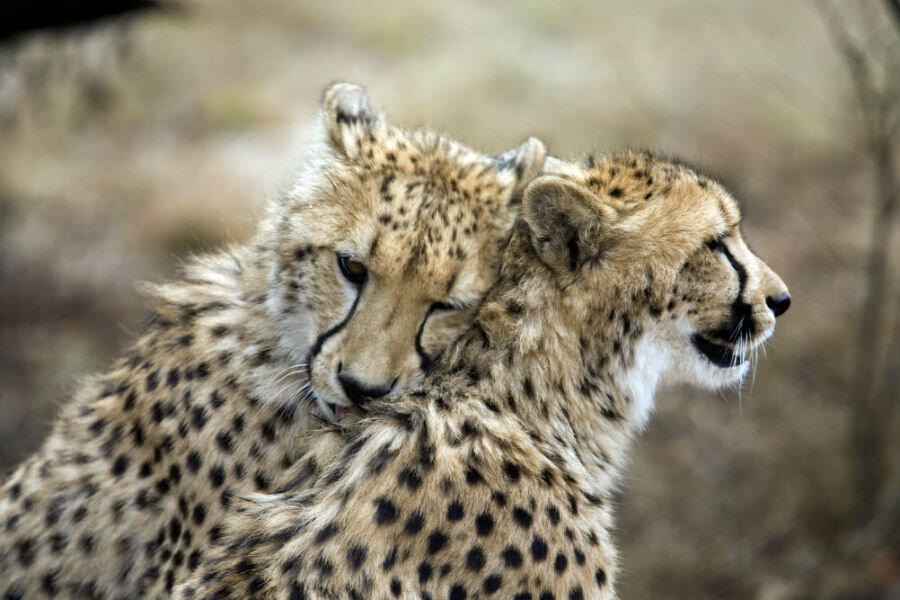Why cheetahs might be moving quickly toward extinction
Loading...
The fastest animal on land appears to be quickly moving toward extinction, according to a new study.
A report published Monday in the journal Proceedings of the National Academy of Sciences suggests that cheetahs be classified as "endangered," a step up from their current "vulnerable" status, on an official watch list of threatened species worldwide. An estimated 7,100 wild cheetahs currently remain in Africa and a small area of Iran, as the big cats have been pushed out of 91 percent of their historic habitat.
Amid concerns about habitat loss and other factors contributing to the cheetah’s endangerment, conservationists are now calling for a new approach to cheetah conservation that would focus on the landscape that transcends national borders and involves coordinated regional strategies. Such an approach, experts say, would require motivating both federal governments and local communities to protect the cheetah.
"We’ve just hit the reset button in our understanding of how close cheetahs are to extinction," said Dr. Kim Young-Overton, from the wild cat conservation organization Panthera, to the Press Association. "The takeaway from this pinnacle study is that securing protected areas alone is not enough. We must think bigger, conserving across the mosaic of protected and unprotected landscapes that these far-reaching cats inhabit, if we are to avert the otherwise certain loss of the cheetah forever."
More than half of all the existing cheetahs in the world live in southern African countries, including Namibia and Botswana. The species has all but disappeared in Asia, with the exception of fewer than 50 cheetahs living in Iran.
Roughly 77 percent of cheetah habitats lie outside wildlife reserves and other protected areas, according to the recent report. The study’s authors say that to save those living outside of protected areas, governments and villages must promote tolerance of the predators, which sometimes hunt livestock. Factors beyond habitat loss that have contributed to the decline of the cheetah population include attacks from villagers, loss of antelope and other prey that are killed and eaten by humans, an illegal cheetah cub trade, cheetah skin trafficking, and collisions with vehicles.
It can be difficult to keep track of such threats, which may be why conservationists had previously underestimated the danger that cheetahs are in, said Sarah Durant, lead author of the report.
“Governments are often required to monitor their wildlife inside protected areas, but not outside them,” Dr. Durant told The Atlantic. "And monitoring is harder to do outside, because cheetah are shy and their densities are lower. We have no data."
Angola is currently developing a plan to protect cheetahs and African wild dogs that could lead to better data on the status of cheetahs there, noted Rosemary Groom, a conservationist who participated in an October workshop on the subject in Angola’s Quicama National Park, to the Associated Press.
If unprotected cheetah populations fall by just 10 percent per year, we could lose half of the world’s cheetahs in 15 years, according to calculations by Durant and her colleagues.
She suggests creating initiatives that will encourage villagers to co-exist with, and even protect, local cheetahs, such as creating certification schemes that would let communities sell goods at a premium if they can manage their local wildlife in a sustainable way.
Eighteen countries currently have national action plans for cheetah conservation.
"They just need to be done,” Durant said. "We need resources, capacity, and political will. If we have that, there’s a possibility. And there needs to be more attention paid to this species. We hear a lot about the other big cats but less about the cheetah."






